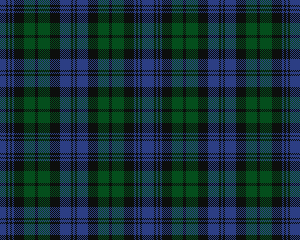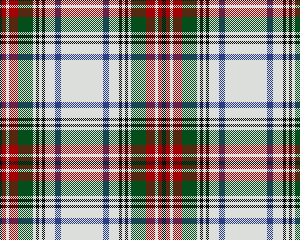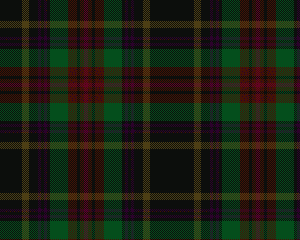Major tartan manufacturers have at least three color schemes and these
are not necessarily the same from one manufacturer to the next. In
general, there will be one color scheme of dark colors, one of lighter
colors, and one of muted colors.
Modern permanent synthetic aniline dyes are capable of very dark colors. The Black Watch
regimental sample above shows the dark blues and the very dark greens. This makes
for a very somber tartan, and recognition may be difficult. A tartan is, after all,
an instrument of recognition.
The older fadible vegetable dyes were seldom capable of producing such rich colors.
When manufacturers decided to produce lighter color schemes, they called
them "ancient" or "old colors." The Clan Campbell sample above shows lighter
blues and lighter greens, which are more easily recognizable. The Black Watch and
Campbell Ancient tartans have the same sett (pattern) and thread count. They use
different colored yarns.
Tartans which have been on display in museums often have a faded, muted, or weathered
look. This is due to the action of light and air working on the vegetable dyes over
time. In order to reproduce this museum look, manufacturers use faded color
schemes, and call them "muted" or "weathered" or "reproduction."






